In the Studio: Christian Việt Đinh
“My nail salon series is meant to celebrate the success of the Vietnamese nail s...
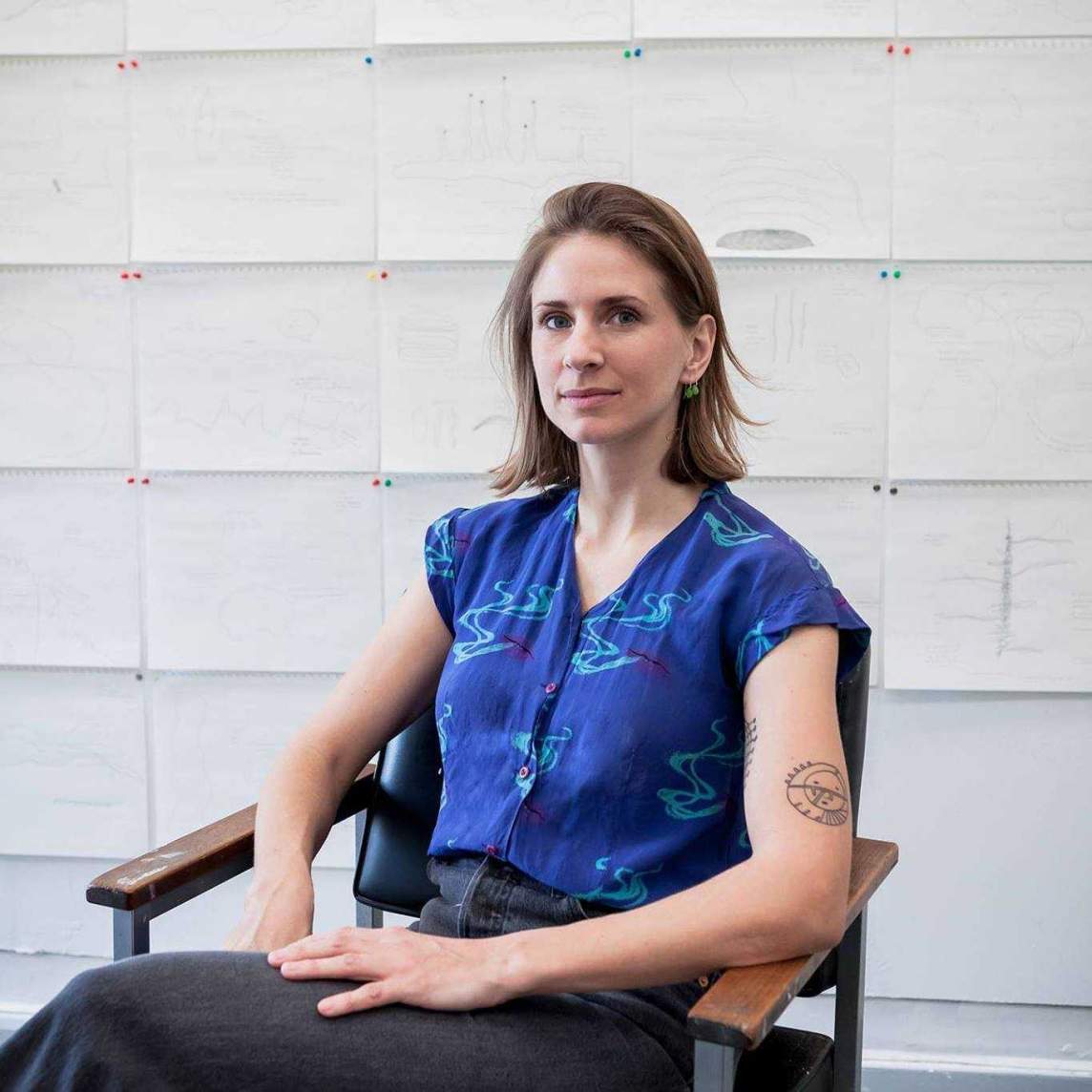
Liza Sylvestre is a multimedia artist and a 2021 recipient of the Joan Mitchell Fellowship. We interviewed her about her work and creative practice in July 2022. The following is an edited transcript of that conversation.
I consider myself to be a concept-based artist who uses material in varying ways, depending on what I'm working on; rather than a traditional studio artist who is beholden to a certain material exploration. Right now I'm finishing up drawings, two videos, and sculptures for an upcoming show. My practice continues to involve a lot of video and performance work. I do a lot of writing and reading. I do a lot of thinking and talking, especially with my partner, Christopher Jones, who's also an artist and we collaborate through our initiative (Crip*: Cripistemology and the Arts) that we co-founded at the university where we both teach.
Like everyone, we have all been home a lot over the past few years during the pandemic. Our six year old was home with us that whole first year-and-a-half and it was interesting and intense to observe the everyday material of that time as we stumbled through full-time parenting and full-time working-from-home. There were Legos and Lego instruction booklets everywhere! At some point during the pandemic I also went through the process of getting a new external processor for my cochlear implant. I've had a cochlear implant since 2003, and this is my third “upgrade.” Every time there's an upgrade there is also a transitional time afterward where everything sounds different as your brain adjusts to the new sensory input and relearns how to make sense of it. It’s a good time to observe things that are familiar. My new external processor showed up in a nice shiny package and I went through the process of getting it programmed and immediately noticed that it comes with all of these instruction booklets and pieces that fit together like Legos.
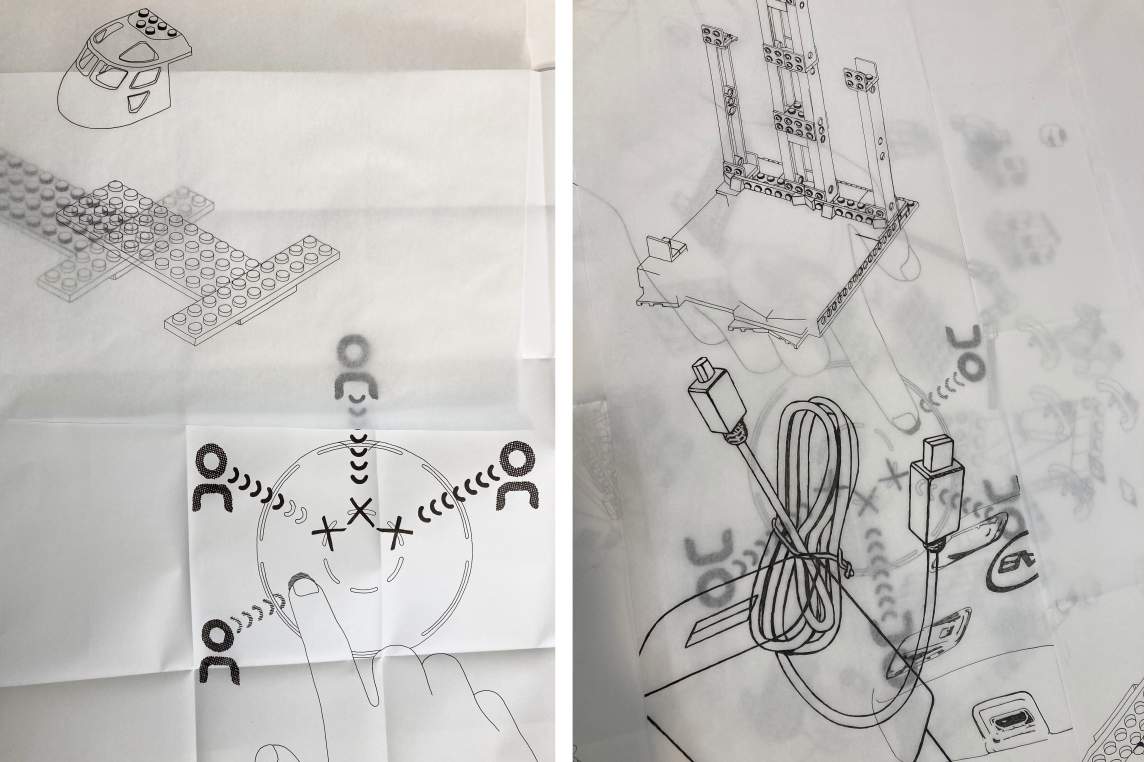
I'm using diagrams from both of these seemingly disparate worlds of images (Legos and cochlear implant parts) to explore overlapping structures of communication and language and understanding—what started out as an exploration of the formal similarities between the two quickly led me to identify the conceptual similarities as well. I’m specifically interested in the structure of language in my family, where I am a person who is deaf, and my child and my partner are both hearing. I’m trying to locate where my disability lives in our family structure. Are my partner and child disabled because of the methods of communication they adapt to communicate with me? Am I disabled if I exist in a family that makes communication possible despite my deafness? Are we a disabled family? What does that mean?
Through the work for this show I feel like I’m exploring the slipperiness of these questions. When you get really close to them, they become less stark or easy to define. I always feel like my work is trying to look at the complicated edges of distinctions—what does hearing mean, what does deafness mean, what does disability mean, where do these things end and begin? I want my work to support the space of asking these questions rather than focus on setting up an identity distinction in the world. Instead of the work saying "This is deaf work, you are hearing, and there are differences between us that are actually reinforced through this work,” I want the work to ask “what does it mean to communicate?” I feel like I'm always trying to look at the issues in a more complex way that implicates everyone and doesn't draw distinctions between myself and someone who has “normal hearing.”
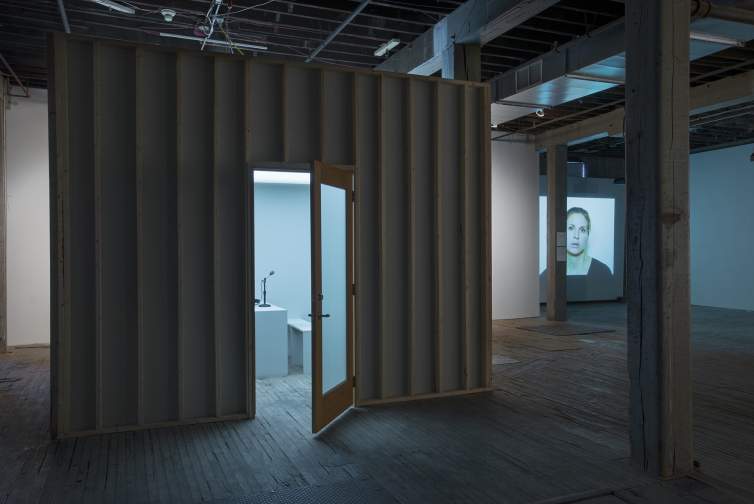
All of my work is performative to some degree in the sense that I'm always, to some extent, responding to the specifics of any given project—the location, the intended audience, the connection between the parameters and the work itself matter deeply to me. This sometimes can make it feel like I move slowly because there are always a lot of things relying on each other, and I rely on others and collaboration to make final decisions. I need to know if a wall is going to be there before I can decide what these drawings are going to look like, is one example I encountered recently. And this is because I see public engagement, and how the work is “activated” or “completed” when it is experienced, as integral to my practice.
I'm making this body of work with the Lego and cochlear implant drawings for a show at John Hansard Gallery in Southampton, England. I've never been to the space and as a result, over the past year, we have had these rigorous meetings with the gallery because I've needed to really think deeply about this lack of familiarity as a material. There are drawings on tracing paper, and there are layers of transparency and objects made out of clear resin, and then there is this really vivid and colorful video. What we’ve been working on is how to create the feeling of experiencers entering this big gallery space and it seems empty at first, but you hear things, you see fine traces of things and transparent objects. So the distance between myself in central Illinois where I live and work and Southampton England is sort of alchemized into material and is brought close to my own experience of public spaces and communication and sound. And, excitingly, this sensitivity, or way of working, supports a more multi-sensory art experience which is also something that is really important to me because it expands how the work can be encountered and engaged.
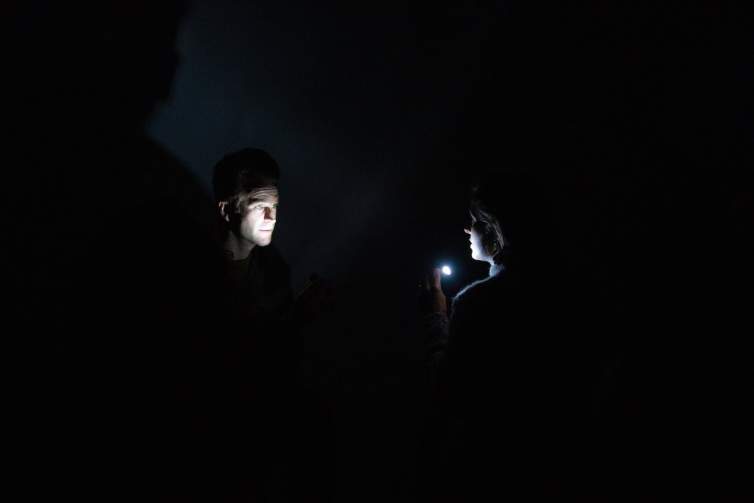
I consider myself to be part of an Americans with Disabilities Act (ADA)-cusp generation. I was born before the ADA was passed in 1990 and the approach to access and the tone around inclusion was radically different at that time. I mention this because I think it is something that often gets lost when we talk about disability. It’s hard for me, from my own vantage of experience, to understand what the disabled generations that preceded me experienced and I see the new generation (individuals who benefit directly from the hardships experienced by previous generations) even further removed from this history. I try to honor this lineage and keep it in perspective as I live and work.
My work is obviously informed by my personal experience. In my film work, in particular my Captioning series, I've worked with films that are either directly from my experience or that represent films that I would have encountered at particular times in my life. The films in this series never stop functioning as the historical archival material that they are. I watch the films with the help of my cochlear implant, but with no captions or subtitles—what all of these films have in common is they lack captioning, or they did when I experienced them, and certainly none of them have open captions integrated into the film experience. So while I'm watching the films I'm missing a big chunk of their intended experience because I'm not able to access the spoken content or the audio cues. In the space of the missing captions I've brought my subjective disabled experience of the film. The captions that I’ve added don't caption what the film says, but they do caption what I'm observing about the film, what I'm thinking about, and what my experience is.
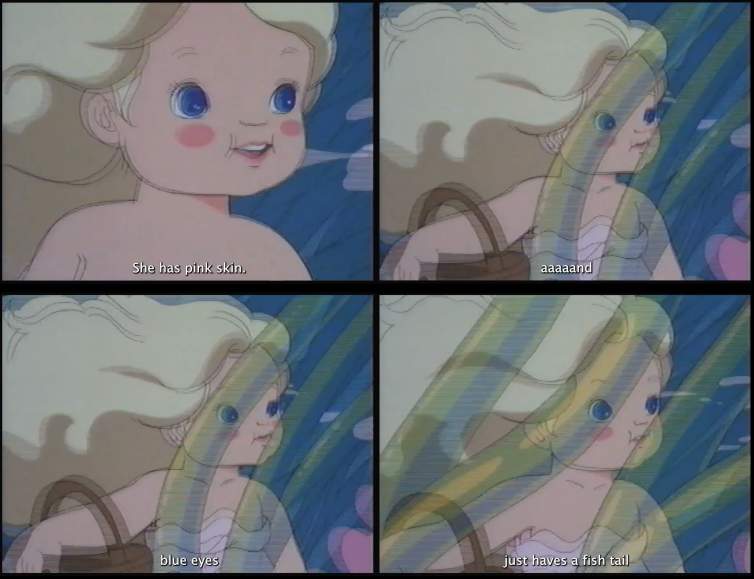
For my upcoming exhibition I'm looking at a particular animated film from my childhood, Sweet Sea. I remember having a Sweat Sea doll in the ‘80s, and I remember it being with me through these traumatic medical interventions. When I experienced that film over and over as a kid I had very different sensory makeup. I was able to hear “normally” and my memory of the film is really coded by what my sensory input was at that time.
I'm revisiting that film 30 plus years later as someone whose sensory experience has changed drastically. Now I am a parent and my child is the age I was when I first experienced the film so we have been remaking it together. My 6 year old watches the film and describes it to me and I adapt the film to fit their description. The film engages generational experiences of disability, interdependence, sensory memory, communication, and time.
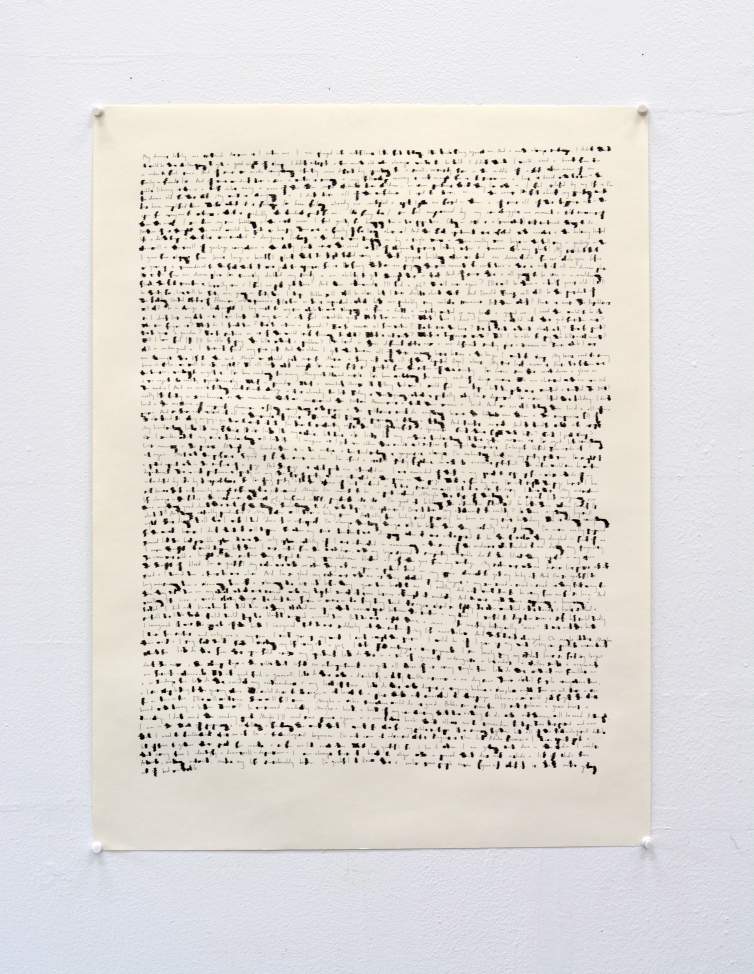
Aside from the film series, there are ongoing drawing projects, like my Interference drawings, that I still make. A lot of people with disabilities or non-normative identities, like myself, are tasked with explaining how we are different. But how do you measure how abnormal you are? "What does the world sound like to you?" is the question I always get. How do I answer that question? And also, how am I able to measure or detect what I don't have access to? The world sounds normal to me, how does the world sound to you? My experience isn’t made up of lack or gaps, my experience is made up of my experience.
The writing that you see in my Interference drawings is a recording of my private thoughts. Then I go back and I locate the parts of each word that I'm not able to hear based on my audiogram—language can be broken down into different pitches from high to low and when it’s broken down this way it’s easy enough to identify which parts of each word I am not able to hear due to my particular hearing loss. The parts of the words that I redact is a very calculated and exact method that corresponds with the parts of the words that I am unable to hear. In this way the drawings make material both what is heard and what is not heard.
My favorite way to think about the drawings is that the redaction actually protects my interior space and my private thoughts. I'm hiding all of my secrets on the gallery wall and you can try really hard to understand them, but you're never really going to fully get it, because my handwriting is messy and I've redacted a lot because I really have very significant hearing loss. In this way the series is about what it means to have a private experience in a public space and how those things are often weirdly complicated when disability is present. I have an “invisible” disability, so I have to continuously “out” myself in order to function in the world. This gesture requires a public reassertion of something that feels private but often doesn’t have the privilege of being private. So the drawings are walking that line, asking what is public and what is private.
Interview and editing by Jenny Gill. Learn more about Liza Sylvestre's work here.